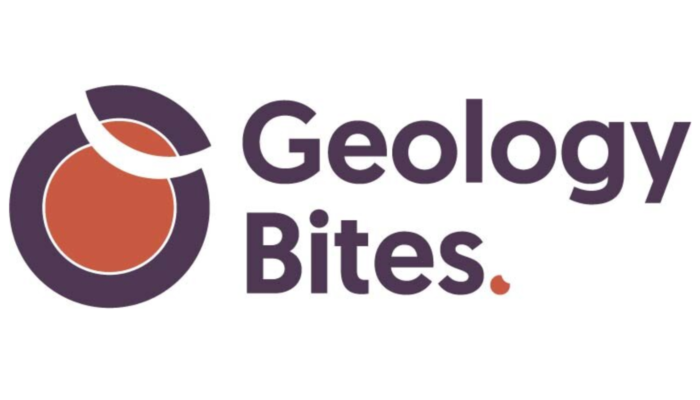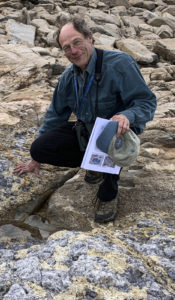
Written by Oliver Strimpel, University of Oxford; edited by Jan and Sabine
What is it about rocks that determines whether they create features in the landscape? In the Sierras, why does the west side with its giant cliffs of glacially polished stone look so different from the gentler terrain of the east side despite having the same bedrock? How has the use of cosmogenic radionuclides revolutionized the field of geomorphology? Why do we see similar patterns in nature over scales from a fraction of a centimeter to hundreds of meters? Left: Mud cracks in a desiccated lake bed on Alaska’s North Slope. The caribou and geese tracks indicate that the cracks are spaced by about 30 cm. Right: Frost wedge polygons on Alaska’s North Slope are about 40 meters across.
Left: Mud cracks in a desiccated lake bed on Alaska’s North Slope. The caribou and geese tracks indicate that the cracks are spaced by about 30 cm. Right: Frost wedge polygons on Alaska’s North Slope are about 40 meters across.
In a recent episode of the podcast series Geology Bites, Bob Anderson of the University of Colorado Boulder gives answers to these (and many more) questions.
Since you are reading an EGU Blog, you must already know how remarkable the field of geosciences in general and geology in particular is. The subject matter stretches the imagination – with its almost cosmological timescales, processes operating on scales from the atomic to the continental, and unimaginable extremes of temperature and pressure.
But in addition to the intrinsic fascination of the subject, what also makes it remarkable is the ingenuity of its practitioners. The podcast series Geology Bites aims to capture their key ideas and research projects in language that the non-specialist can understand. But while eliminating jargon, I have tried not to sacrifice the essence of the ideas, even when they are quite subtle or complex.
The series currently has nearly 30 episodes on geophysics and seismology, tectonics, geodynamics, volcanism, paleontology, paleoclimate, mineralogy, geomorphology, and planetary science. I post new episodes every week or two – whenever they are ready. In the pipeline right now are:
- Katie Stack of JPL/Caltech on geological mapping of Mars using the Perseverance rover;
- Peter Molnar on why the Tibetan Plateau is so high;
- Craig Jones on the iconic landscapes of the American Westerns; and
- Annakaisa Korja on the formation of Europe: part 1 – the assembly of the Fennoscandian Shield in the Precambrian.
I hope you enjoy the series and do please send me comments and suggestions, or ask me to notify you when new episodes are posted at geologybitespodcast@gmail.com.
Author Information

The podcast series is by Dr Oliver Strimpel, a keen amateur geologist, and a former astrophysicist and museum director. Oliver has a physics degree from Cambridge University and a PhD in astrophysics from Oxford University. He became a curator at the Science Museum, London, and four years later moved to The Computer Museum in Boston, where, as Curator and Director, he developed exhibitions on the history, technology, and applications of computers. It was his desire to understand how the physical landscape came to be that led him to geology. He immersed himself in courses at the Open University and at MIT and undertook a geochronology research project at Oxford University. Geology Bites grew out of a wish to share nuggets and perspectives of this remarkable field of study.
Geologybites.com
Twitter: @OliverStrimpel, @geology_bites
Instagram: oliverstrimpel
